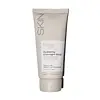What's inside
What's inside
 Key Ingredients
Key Ingredients

 Benefits
Benefits

 Concerns
Concerns

 Ingredients Side-by-side
Ingredients Side-by-side

Propolis Extract
Skin ConditioningButylene Glycol
HumectantGlycerin
HumectantHoney Extract
HumectantRoyal Jelly Extract
Skin Conditioning1,2-Hexanediol
Skin ConditioningWater
Skin ConditioningBetaine
HumectantCassia Obtusifolia Seed Extract
Skin ConditioningCarbomer
Emulsion StabilisingArginine
MaskingEthylhexylglycerin
Skin ConditioningPolyglyceryl-10 Myristate
Skin ConditioningPolyglyceryl-10 Laurate
Skin ConditioningXanthan Gum
EmulsifyingHelianthus Annuus Seed Oil
EmollientSodium Polyacrylate
AbsorbentPanthenol
Skin ConditioningAllantoin
Skin ConditioningAdenosine
Skin ConditioningSodium Hyaluronate
HumectantBeeswax
Emulsion StabilisingPropolis Extract, Butylene Glycol, Glycerin, Honey Extract, Royal Jelly Extract, 1,2-Hexanediol, Water, Betaine, Cassia Obtusifolia Seed Extract, Carbomer, Arginine, Ethylhexylglycerin, Polyglyceryl-10 Myristate, Polyglyceryl-10 Laurate, Xanthan Gum, Helianthus Annuus Seed Oil, Sodium Polyacrylate, Panthenol, Allantoin, Adenosine, Sodium Hyaluronate, Beeswax
Water
Skin ConditioningGlycerin
HumectantMacadamia Ternifolia Seed Oil
EmollientDipropylene Glycol
HumectantHydrogenated Polydecene
Emollient1,2-Hexanediol
Skin ConditioningCetearyl Alcohol
EmollientBehenyl Alcohol
EmollientButylene Glycol
HumectantCaprylic/Capric Triglyceride
MaskingNeopentyl Glycol Dicaprylate/Dicaprate
EmollientMethyl Gluceth-10
EmulsifyingTriethylhexanoin
MaskingParfum
MaskingCarbomer
Emulsion StabilisingArginine
MaskingGlyceryl Stearate
EmollientPEG-100 Stearate
Ethylhexylglycerin
Skin ConditioningPanthenol
Skin ConditioningDisodium EDTA
Hydrogenated Lecithin
EmulsifyingAnthemis Nobilis Flower Extract
MaskingTocopherol
AntioxidantWater, Glycerin, Macadamia Ternifolia Seed Oil, Dipropylene Glycol, Hydrogenated Polydecene, 1,2-Hexanediol, Cetearyl Alcohol, Behenyl Alcohol, Butylene Glycol, Caprylic/Capric Triglyceride, Neopentyl Glycol Dicaprylate/Dicaprate, Methyl Gluceth-10, Triethylhexanoin, Parfum, Carbomer, Arginine, Glyceryl Stearate, PEG-100 Stearate, Ethylhexylglycerin, Panthenol, Disodium EDTA, Hydrogenated Lecithin, Anthemis Nobilis Flower Extract, Tocopherol
 Reviews
Reviews

Ingredients Explained
These ingredients are found in both products.
Ingredients higher up in an ingredient list are typically present in a larger amount.
1,2-Hexanediol is a synthetic liquid and another multi-functional powerhouse.
It is a:
- Humectant, drawing moisture into the skin
- Emollient, helping to soften skin
- Solvent, dispersing and stabilizing formulas
- Preservative booster, enhancing the antimicrobial activity of other preservatives
Arginine is an amino acid that is important for human development. Your body uses is it to produce hair keratin and skin collagen.
As a cosmetic ingredient, Arginine has antioxidant properties and can also help repair damaged skin. This ingredient is derived either synthetically or from animals.
Arginine isn't fungal acne safe when used in the presence of other lipids (fats, fatty acids, oils, esters, etc). Oils and fats occur naturally within the skin, so take caution when using Arginine if you're prone to fungal acne.
Learn more about ArginineButylene Glycol (or BG) is used within cosmetic products for a few different reasons:
Overall, Butylene Glycol is a safe and well-rounded ingredient that works well with other ingredients.
Though this ingredient works well with most skin types, some people with sensitive skin may experience a reaction such as allergic rashes, closed comedones, or itchiness.
Learn more about Butylene GlycolCarbomer is a polymer of acrylic acid. Its main role is to create a gel consistency.
A high amount of carbomer can cause pilling or balling up of products. Don't worry, most products contain 1% or less of carbomer.
Ethylhexylglycerin (we can't pronounce this either) is commonly used as a preservative and skin softener. It is derived from glyceryl.
You might see Ethylhexylglycerin often paired with other preservatives such as phenoxyethanol. Ethylhexylglycerin has been found to increase the effectiveness of these other preservatives.
Glycerin is already naturally found in your skin. It helps moisturize and protect your skin.
A study from 2016 found glycerin to be more effective as a humectant than AHAs and hyaluronic acid.
As a humectant, it helps the skin stay hydrated by pulling moisture to your skin. The low molecular weight of glycerin allows it to pull moisture into the deeper layers of your skin.
Hydrated skin improves your skin barrier; Your skin barrier helps protect against irritants and bacteria.
Glycerin has also been found to have antimicrobial and antiviral properties. Due to these properties, glycerin is often used in wound and burn treatments.
In cosmetics, glycerin is usually derived from plants such as soybean or palm. However, it can also be sourced from animals, such as tallow or animal fat.
This ingredient is organic, colorless, odorless, and non-toxic.
Glycerin is the name for this ingredient in American English. British English uses Glycerol/Glycerine.
Learn more about GlycerinPanthenol is a common ingredient that helps hydrate and soothe the skin. It is found naturally in our skin and hair.
There are two forms of panthenol: D and L.
D-panthenol is also known as dexpanthenol. Most cosmetics use dexpanthenol or a mixture of D and L-panthenol.
Panthenol is famous due to its ability to go deeper into the skin's layers. Using this ingredient has numerous pros (and no cons):
Like hyaluronic acid, panthenol is a humectant. Humectants are able to bind and hold large amounts of water to keep skin hydrated.
This ingredient works well for wound healing. It works by increasing tissue in the wound and helps close open wounds.
Once oxidized, panthenol converts to pantothenic acid. Panthothenic acid is found in all living cells.
This ingredient is also referred to as pro-vitamin B5.
Learn more about PanthenolWater. It's the most common cosmetic ingredient of all. You'll usually see it at the top of ingredient lists, meaning that it makes up the largest part of the product.
So why is it so popular? Water most often acts as a solvent - this means that it helps dissolve other ingredients into the formulation.
You'll also recognize water as that liquid we all need to stay alive. If you see this, drink a glass of water. Stay hydrated!
Learn more about Water